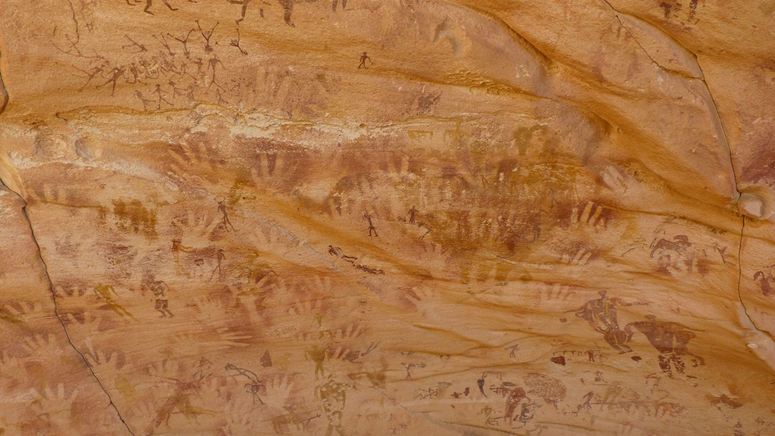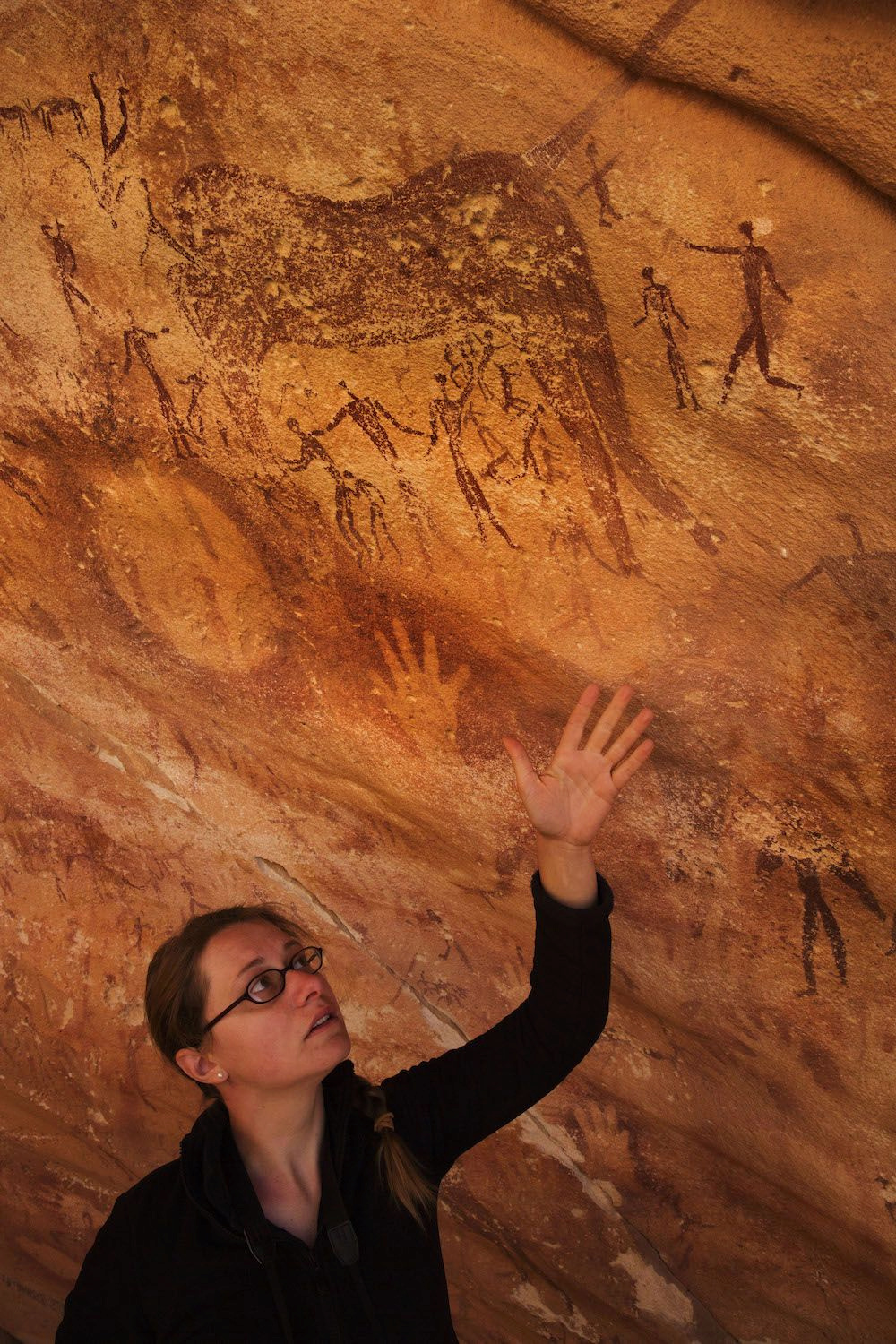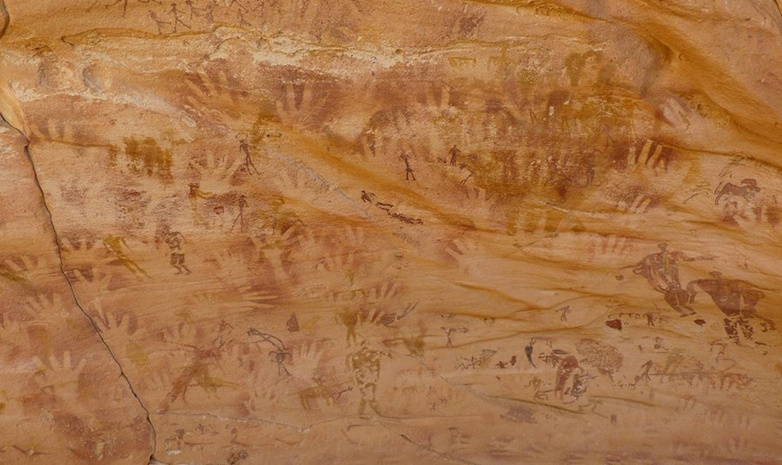These prehistoric "baby hands" are not human

Tiny hands, originally thought to be those of very young children or infants, have been painted inside the lineaments of adult hands on the walls of Wadi Sora II cave in the Libyan Desert , in Egypt, about 8,000 years ago.
An analysis of tiny hands painted 8,000 years ago and discovered in a cave in the Sahara has revealed that they are not of human origin.
In 2002, when the site of Wadi Sora II was discovered in the Lybic Desert, Egypt, researchers were baffled by the thousands of decorations painted some 8,000 years earlier on the walls of this rock shelter. Not only are there wild animals, human figures and strange headless creatures that have earned the place the nickname "Cave of Beasts", but also, by the hundreds, the lineament of human handprints; more than at any other rock art site in the Sahara.
Stranger still were the outlines of thirteen tiny handprints. Until the discovery of Wadi Sora II, rock art depicting hands and feet made using stencils had been found in other parts of the world, but never in the Sahara. One scene is particularly remarkable and touching: a pair of “baby” hands are nestled inside the outline of larger, adult hands.
But there is something even stranger: these tiny hands are not human.

searching for answers in a french hospital
Wadi Sora II is considered to be one of the most extraordinary rock art sites in the Sahara, although it is not as famous as its neighbour, Wadi Sora I, the "Cave of the Swimmers", discovered by the Hungarian Count Láslo Almásy in 1933 and popularized in The English Patient , a 1996 film.
Anthropologist Emmanuelle Honoré, from the Université Libre de Bruxelles, describes how she was "shocked" by the shape of the unusually small hands when she saw them during her first visit to Wadi Sora II in 2006. noticeably smaller than human baby hands, and the fingers were too long,” she explains.
Emmanuelle Honoré decided to compare the size of the contours of these hands with that of the hands of human newborns (37 to 41 weeks of gestational age). Since the models on the site were tiny, she also included measurements made on premature babies (26 to 36 weeks gestational age).
To this end, the anthropologist recruited a team that also included researchers from the medical field to collect these infant data in the neonatal unit of a French hospital. "If I had gone to a hospital and just said, 'I study rock art. Do you have babies?' called security,” she laughs.
The results revealed that the likelihood that the hands of "babies" in the Cave of Beasts are human is extremely low.

children-artists
Paradoxically, this discovery occurred in a context of awareness of the role played by children in the creation of rock and parietal art, often underestimated or even simply dismissed out of hand by researchers of the past. . "It's ironic, considering that in any Western household, the person who produces the most artwork is the child," says Jane Eva Baxter , a DuPaul University archaeologist specializing in childhood. “So the idea that [prehistoric] children weren't allowed to produce works is a funny idea. »
More recently, in 2022, a study revealed that up to 25% of footprints made with the stencil technique discovered in Palaeolithic caves in Spain were those of children, or even toddlers.
But then, if the footprints of Wadi Sora II were not human, what were they? The positioning of the tiny hands and their fingers varies from imprint to imprint, leading researchers to conclude that they were flexible and articulated and to rule out the possibility of a stencil made from static material such as metal. wood or clay.
Emmanuelle Honoré initially thought of monkey legs, but when she realized that these proportions did not correspond either, colleagues from the Museum of Natural History in Paris suggested that she take an interest in reptiles. It turns out that the limbs with the closest proportions to "baby" hands are the front legs of the desert monitor lizard ( Varanus griseus ), which still lives in the area today and which the nomadic tribes of the area consider to be a protective creature. Emmanuelle Honoré later established that the "baby" prints were produced by a single lizard, assisted by at least two adult artists.
Emmanuelle Honoré is reluctant to say too much about the meaning of these non-human footprints. “We have a modern conception that nature is something that humans are separate from,” she observes. But in this gigantic collection of images we can see that humans are simply part of a larger natural world. »

Still, many parents whose babies participated in the study were excited to take part in this rock discovery. “They were really enthusiastic about the idea that their newborn could make such a contribution to science,” concludes Emmanuelle Honoré.
Source : websites

